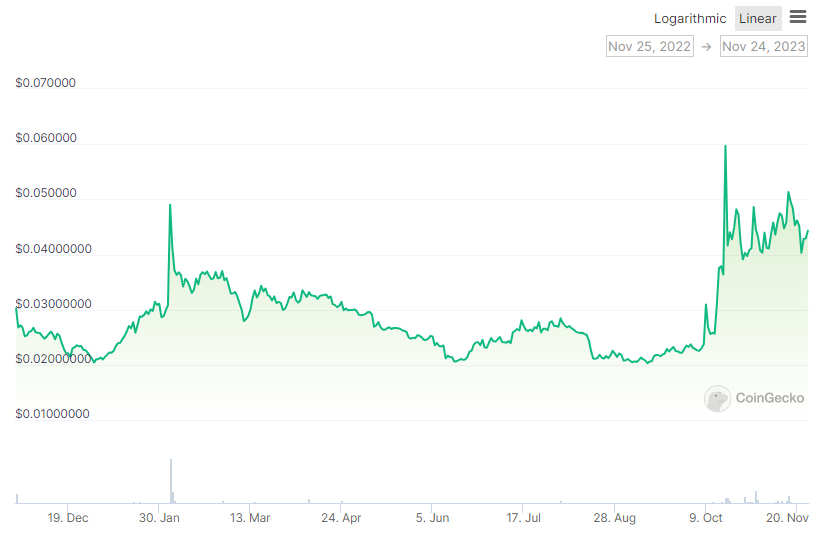
Please check out latest news, expert comments and industry insights from Coinspeaker's contributors.
The rise of Layer 3s opens up the world of Web3 to new developments and more complex structures, which could usher in the next phase of blockchains.
 Edited by Julia Sakovich
Updated
5 mins read
Edited by Julia Sakovich
Updated
5 mins read

Since the bullish run in 2021, the crypto industry has moved at a slow pace, with the market losing trillions of dollars in market valuation. Nonetheless, 2023 has seen the space rediscover its technological advancement prowess, with developers creating a new foundation for the evolution of blockchain. This year has seen the rise of Layer 3 blockchains (or the application layer), opening up a whole new host of new scaling solutions and DApp development as never seen before.
While Layer 3s have been around for a while, this year has been the breakthrough for most projects e.g. Orbs, which has grown by over 35% this year. Simply, Layer 3 technologies offer the Web3 community an opportunity to refine their underlying technology, providing blockchains with much-needed solutions to some of the most insidious problems the crypto industry faces: scalability, cost-effectiveness, interoperability, and customization.

Chart showing the massive growth of Layer 3 network Orbs price. Photo: Coingecko
The growth of this new technology is expected to help drive innovation and mass adoption of crypto, in wait for the Bitcoin halving – and possibly, kick off a mega bullish market just as its predecessor, Layer 2s, did in 2021.
Made popular by Vitalik’s paper, “What kind of layer 3s make sense?”, Layer 3 (L3) is a novel technology across blockchains that provides additional scalability and customization for decentralized applications, on top of Layer 1 and Layer 2. Simply, Layer 3s are built to draw the security factor from Layer 1 and scalability and cost-reduction from Layer 2 blockchains. These blockchains (better stated as AppChains) offer hyper-scalability through recursive proving and improved privacy with zero-knowledge proofs.
For example, Layer 3 blockchains built on Ethereum aim to solve the scalability problem by increasing the throughput and efficiency of the Ethereum network so that it can support more transactions and applications. This has made Layer 3s a perfect option for DeFi and GameFi DApps that aim to scale and customize, hence the massive growth in 2023.
For instance, Arbitrum Orbit (a Layer 3 chain built atop Arbitrum, which is a Layer 2 scalability solution for Ethereum) allows developers to customize and choose which tokens to accept for transaction fees on their chain. This gives developers the flexibility to choose and potentially include a native token for the platform, allowing developers to customize the functionality of their dApp to their unique needs.

Photo: The Orbs
Orbs, another Layer 3, utilizes its own smart contract deployment layer to enhance the utility of EVM-compatible smart contracts, giving developers a wider scope to customize their DApps without worrying about scalability or security. For a better understanding, imagine a blockchain game that aims to have billions of monthly transactions. While using a Layer 2 platform would allow these transactions to scale, Orbs would handle a much larger volume of transactions at faster speeds. This allows the game developers to develop a much more seamless in-game experience for gamers, which has been a headache for most blockchain game developers.
Notwithstanding, blockchain games tend to process a ton of microtransactions, which could be costly if the game is built on Layer 1 or Layer 2 blockchains. With Orbs, developers can ensure a cost-effective model, via the lowered transaction fees on Layer 3s. Besides cost-saving and more scalable solutions, Layer 3s adds a new layer of complex strategies for DApps, allowing developers to extend their apps’ utility across the Web3 space.
In stark contrast to Layer 1 blockchains such as Bitcoin and Ethereum, and Layer 2 blockchains (Arbitrum and Optimism), Layer 3s are extremely scalable. A DApp built on Layer 3 is able to handle a far much larger volume of transactions than the former two layers. This allows developers to build a much wider range of complex apps, including decentralized finance apps and games.
Additionally, Layer 3 offers developers the necessary infrastructure to build more complex applications with more customizable and advanced features. As such, users gain unique capabilities and application-specific features such as allowing the execution of private transactions and smart contracts. This customization allows developers to create application-specific governing mechanisms, features, and rules, previously not viable on Layer 1s and Layer 2s.
Layer 3s also enhances the mass adoption of Web3 as DApps created on these platforms are easier to implement and understand. For instance, Orbs allows any developer to build and deploy their own Layer 3 without needing the community’s approval. In contrast, Layer 2s requires the developer to launch a proposal around their model and explain to the community how their project will accomplish full decentralization.
The rise of Layer 3s opens up the world of Web3 to new developments and more complex structures, which could usher in the next phase of blockchains. This novel technology allows more layman users to develop and use DApps, enhancing mass adoption.
Finally, the cost-effective nature and interoperability allow for more transactions to be completed, allowing data to flow across the different platforms. This means that the Layer 3 dApps have the functionality to connect to different blockchains.
Disclaimer: Coinspeaker is committed to providing unbiased and transparent reporting. This article aims to deliver accurate and timely information but should not be taken as financial or investment advice. Since market conditions can change rapidly, we encourage you to verify information on your own and consult with a professional before making any decisions based on this content.

Please check out latest news, expert comments and industry insights from Coinspeaker's contributors.





